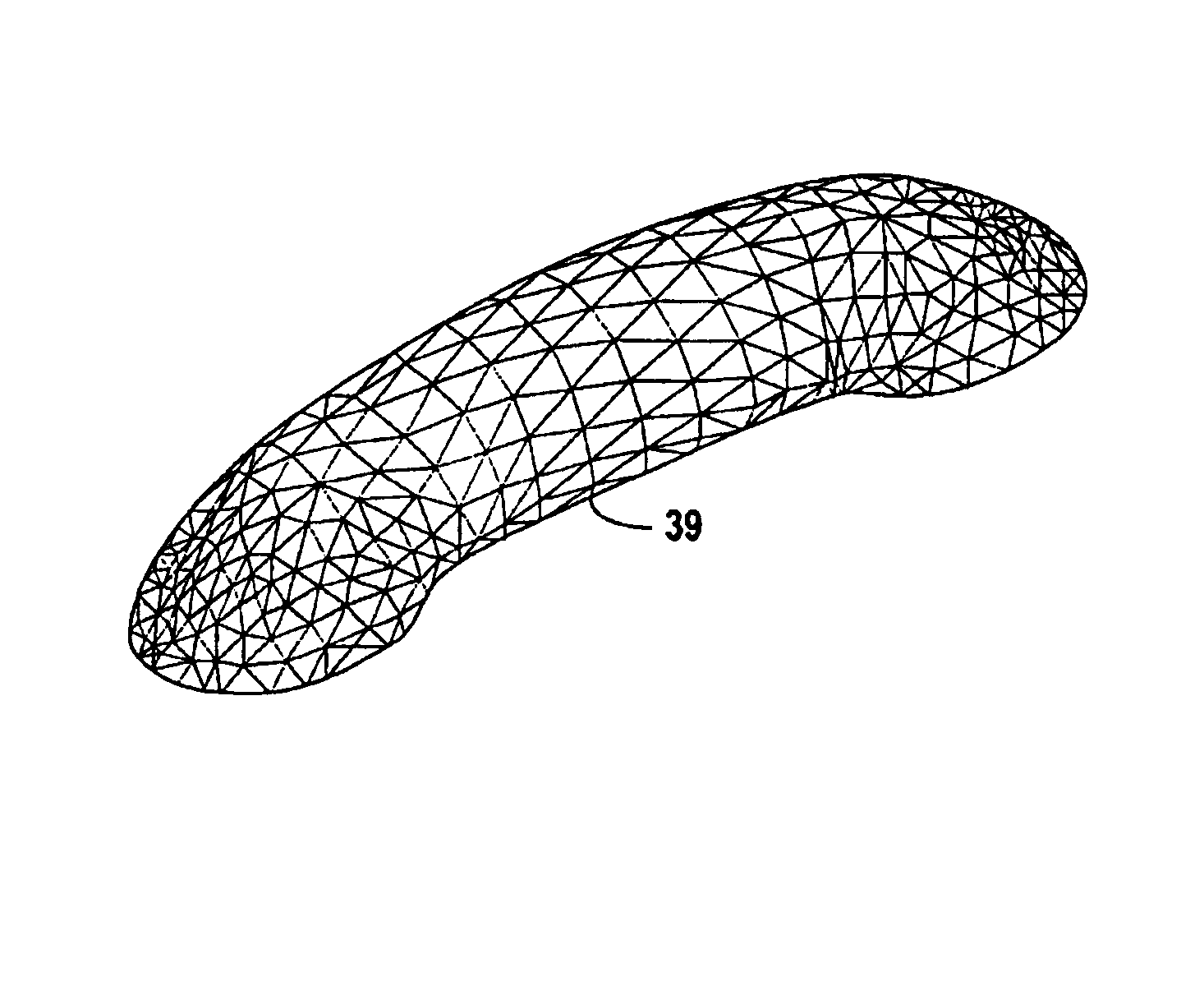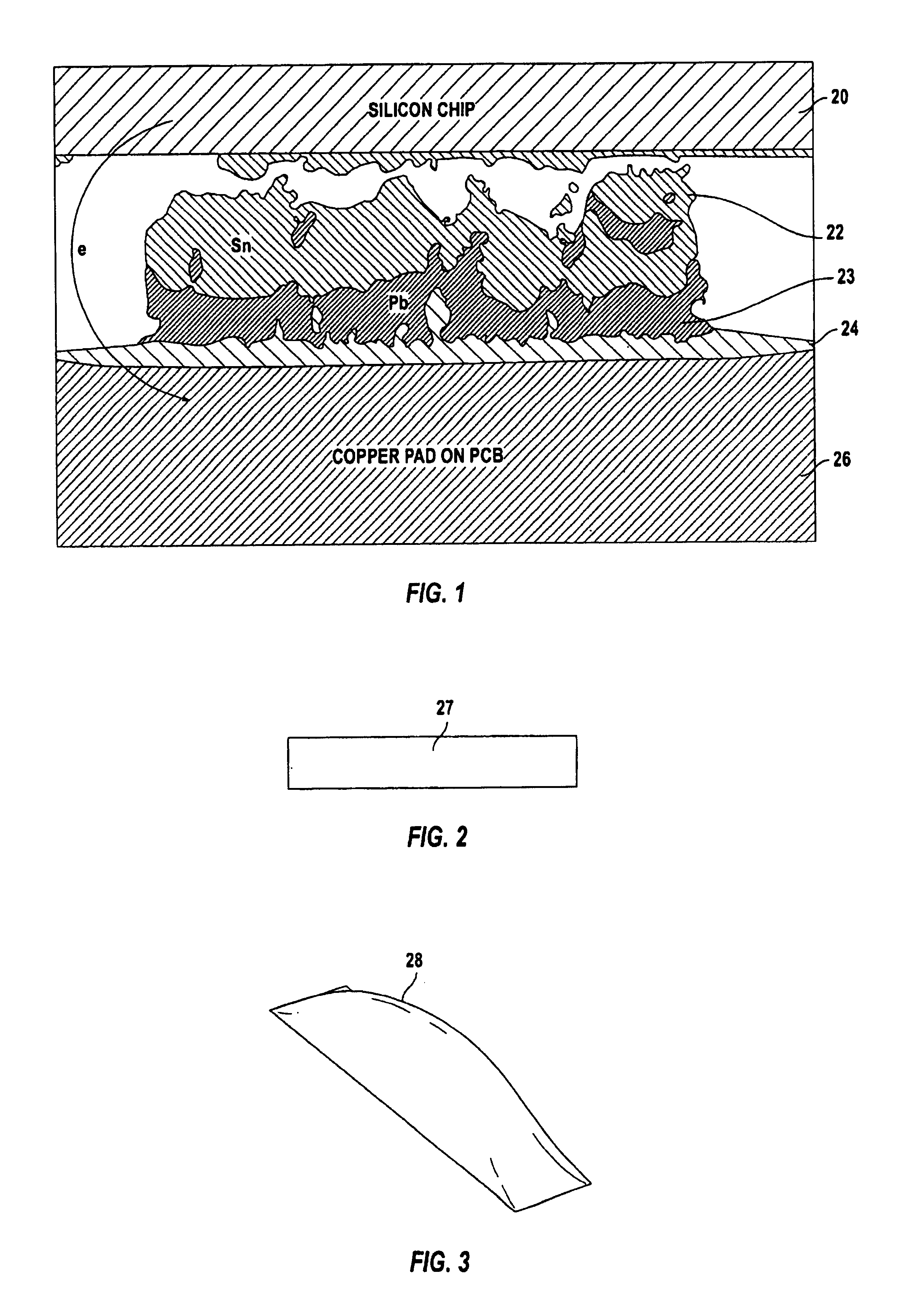Solder bar for high power flip chips
a flip chip and solder bar technology, applied in the field of flip chip integrated circuits, can solve the problems of typical flip chip solder bumps experiencing early failures, functional and reliability problems during the device operating life, and limited area in which to position the solder bumps, so as to reduce the current density of solder. the effect of increasing the cross-sectional area
- Summary
- Abstract
- Description
- Claims
- Application Information
AI Technical Summary
Benefits of technology
Problems solved by technology
Method used
Image
Examples
Embodiment Construction
[0039]Before describing the preferred embodiment of the present invention, it may be helpful to first consider a very basic, non-optimal structure for a solder bar. A simple rectangular UBM (Under Bump Metal) structure 27 for a solder bar is shown in FIG. 2. In order to predict the results of using such a configuration, a computer software model was used. One such computer model known by the name “Surface Evolver” is available from the University of Minnesota Geometry Center, and can be downloaded over the Internet via a Web page having the domain name “http: / / geom.umn.edu / software / download / evolver.html”. Using the rectangular layout shown in FIG. 2, and based upon the selection of a particular solder bar volume VB, the Surface Evolver computer model results in a non-optimal solder bar profile 28 shown in FIG. 3. This simple solder bar structure does not achieve the desired results, as the height of solder bar 28 is continuously changing over its length. When this type of solder bar...
PUM
 Login to View More
Login to View More Abstract
Description
Claims
Application Information
 Login to View More
Login to View More - R&D
- Intellectual Property
- Life Sciences
- Materials
- Tech Scout
- Unparalleled Data Quality
- Higher Quality Content
- 60% Fewer Hallucinations
Browse by: Latest US Patents, China's latest patents, Technical Efficacy Thesaurus, Application Domain, Technology Topic, Popular Technical Reports.
© 2025 PatSnap. All rights reserved.Legal|Privacy policy|Modern Slavery Act Transparency Statement|Sitemap|About US| Contact US: help@patsnap.com



